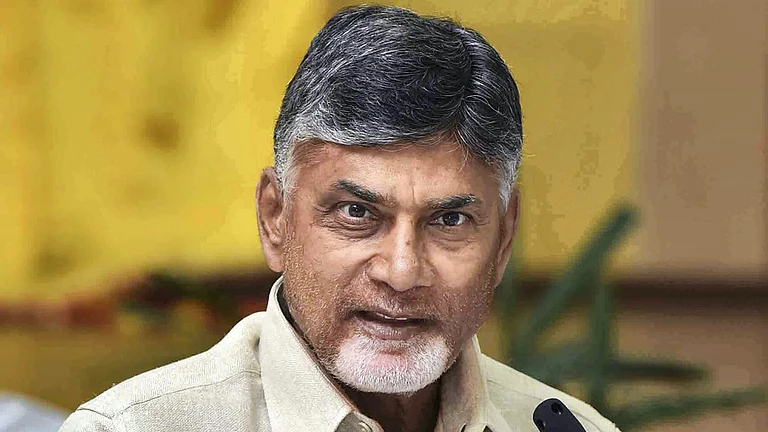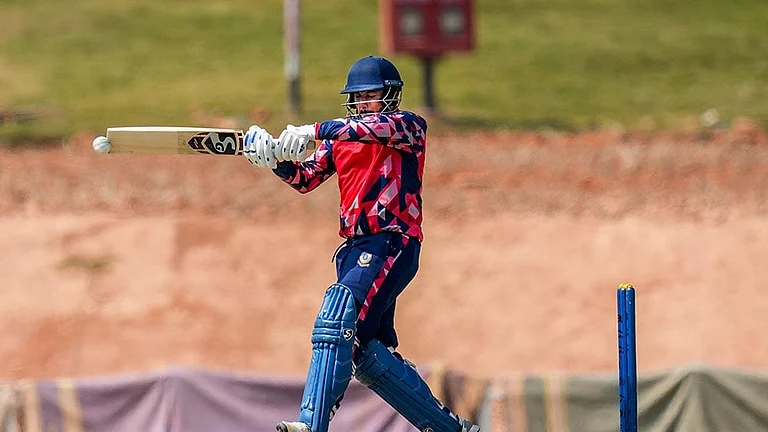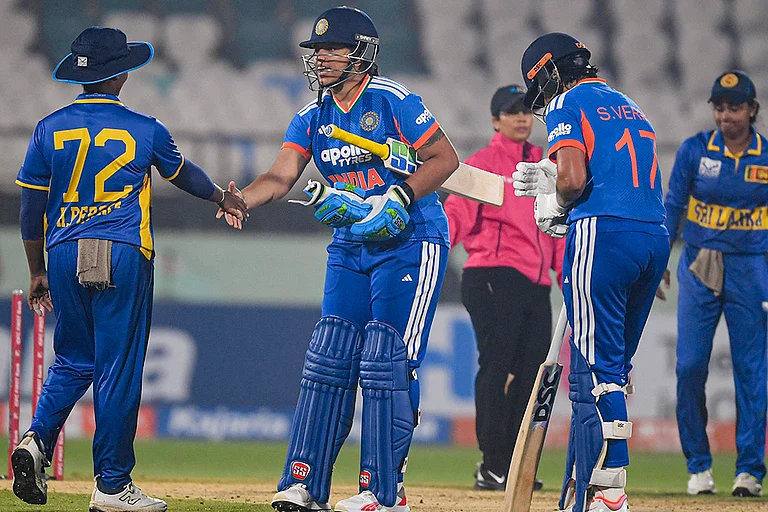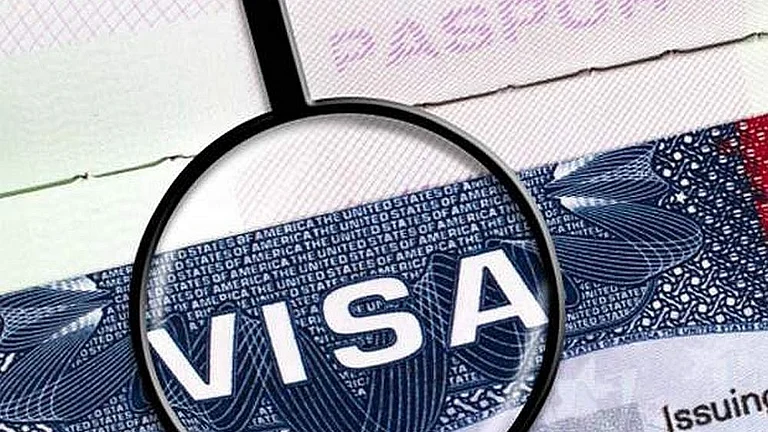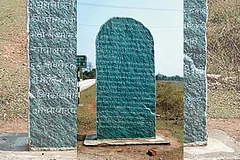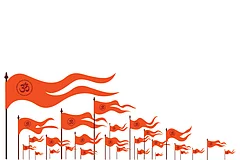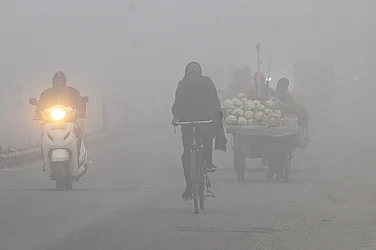Earlier this month, more than a dozen tribal families living in the Meduvai village in Andhra Pradesh’s Bhadrachalam district, had a rude awakening in the dead of night. Andhra Police (AP) and state administrative officials pulled tribal women like Lakshmi, who was in her late 40s, by their hair from their homes and warned them to leave their ancestral lands before sunrise. The government machinery alleged that the tribals were occupying the territory ‘illegally’.
“What was our crime? Sleeping peacefully at home?” asks Lakshmi, who hails from the Konda Reddi tribes, which have generational ties to Meduvai village and nearby areas. Her eyes are red from anger and fatigue. “I looked straight into the eyes of the officials wielding guns and said I will not leave my land,” she says. Despite her courage in the face of adversity, Lakshmi, along with 15 families from the same tribe, were vacated from their ancestral lands on that February night. “You belong in the jungles. You should go back there,” they were told by the officials who orchestrated the government’s drive to vacate tribals living in the area.

Lakshmi now works as a maid in an upper middle-class household in Bhadrachalam. The tall building she works in now, looms over her new home—a thatched hut—which she moved into after being displaced by a multi-crore irrigation project. Lakshmi had shut her eyes for what seemed like a minute, while her home was razed by officials right in front of her. She did not see the walls crumbling, but the sounds of demolition continue to echo in her ears.
The Konda Reddis or Hill Reddis (completely unrelated to another dominant Hindu caste, also known by the ‘Reddy’ surname), are a primitive tribe of Andhra Pradesh. Throughout their lives, they perform rituals associated with the Godavari River. But with the coming of the Polavaram Project—an under-construction multi-purpose irrigation facility on the Godavari River in AP’s Eluru and East Godavari districts—these tribes have been forced to shift away from their land.
Just over a 100 kms away, Prime Minister Narendra Modi, in 2022, unveiled a 30-foot bronze statue of Alluri Sitharam Raju, a 19th century freedom fighter who led a guerilla resistance-style movement against the British in the colonial era.
Speaking at the event, Modi said, he was honoured to be in a land that had “such a rich history of sacrifice, fighting spirit and stories of Adivasi heroes.” But despite the renewed outreach to the community, tribals in the region continue to lose their homelands and their grip over their rights, either due to politics between parties or the government’s divisive policies.

“These political parties and their leaders tell us that they are for the Adivasis. They make tall promises and erect statues of our leaders,” Lakshmi rants. “But how is it acceptable that our homes continue to be destroyed, our food stepped on and our women beaten even after 75 years of independence?”
Politics of Gestures
Murala Ramesh Reddy, a tribal leader from Telangana, sits in a huddle with the women from the Meduvai village, who narrate their eviction in detail. He makes them aware of their right to occupy their land under the Fifth Schedule and the Forest Rights Act (FRA). The women nod, almost conveying silently, that they see no way out of this.
“One person alone cannot stand against such oppression. We all need to come together,” says Reddy, who claims he is politically neutral. He also says that the tribal community in Telugu-speaking states has not been able to mobilise collectively, to claim rights under the FRA and other relevant legislations. The elected political representatives are not visible, neither at the grassroots level nor in Parliament, Reddy says.
“How is it acceptable that our homes continue to be destroyed, our food stepped on and our women beaten?”
The Assembly elections in neighbouring Telangana concluded just over two months ago. With the Lok Sabha elections nearing and Andhra Pradesh set to hold assembly elections simultaneously, tribals in the region are waiting for the model code of conduct to set in.
“At least that way, political leaders will come to our areas and see for themselves what is happening,” says Chinakka*, whose hamlet Lakshmi has now moved into. For Lakshmi and Chinakka, their eviction reminded them of horrific memories of the 1981 Indravelli massacre in Adilabad district (now in Telangana) in erstwhile undivided Andhra. Conflicting reports on the toll persist, with some victims secretly cremated or found unaccounted for, but the Andhra Civil Liberties Committee, which probed the incident, reported over 100 deaths. Chinakka skips the bloody details of the massacre.
A gathering of Gond Adivasis, some of whom were part of the Girijana Rythu Coolie Sangham (GRCS), a front group of the Kondapalli Seetharamaiah faction of the CPI (ML), were fired upon by police officers while they were protesting against encroachment by non-Adivasis. Many were run over by a police jeep. Those Adivasis who didn’t submit to the security forces, were fired upon point blank. “How is that any different from what continues to happen to us nowadays,” she asks.
It was in the village of Indravelli that current Telangana Chief Minister Revanth Reddy, on February 2, sounded his poll bugle from, for the upcoming Lok Sabha elections. He expressed regret for the massacre that the Congress had overlooked at that time. However, he attributed the incident to the Congress leaders of the undivided Andhra Pradesh and emphasised that his government remains dedicated to the well-being of tribals.
“We appreciate that the government has accepted accountability,” says Ramesh Reddy. “But their responsibility also lies in alleviating the problems of Adivasis. The very issues they were killed for back then persist even now and they are still at risk of losing their lives for these same reasons. The apology) is purely a politics of gestures,” he says, even as members of the tribal community, huddled near him, look at each other and nod.
They claim that not only the Congress, but also the politics of most parties involve merely superficial gestures, irrespective of whether it is appointing a tribal as the country’s President or the announcement of a tribal university by PM Modi.
Unique Identity
Activists, however, caution that in some instances, political parties have breached the boundaries of paying mere lip service. For instance, they claim that the BJP and its affiliated organisations have been actively engaging on the ground to assimilate Adivasis into the Hindu fold, despite consistent assertions by the Adivasis of their distinct identity.
Former Secretary to the Government of India, EAS Sarma, alleges that the activities of these organisations are an “unhealthy intrusion into tribal culture.”
“In recent times, in the name of countering religious conversions, some RSS-affiliated NGOs have started working in tribal areas, but they are insensitive to the fact that tribals have their own religious practices, culture, etc,” he says.
Apart from reaching out to Adivasis through the distribution of essential items, setting up medical and relief camps during floods and establishing the Vanavasi Kalyan Ashram schools and hostels that tutor students, these organisations also promote Hindutva philosophy and ideology. “Hindutva groups are so obsessed with the promotion of Hinduism (as they understand it) that they ignore the existence of other religions and cultures. Tribals have their own religious practices, which should be promoted,” Sarma says.
In a similar vein of identity distortion, in 2021, following the release of SS Rajamouli’s RRR, loosely based on Adivasi leaders Komaram Bheem and Alluri Sitharama Raju, the Hindu right attempted to portray Bheem as a Hindu nationalist leader. In one interview with a news channel shortly after the film’s teaser was released, BJP MP and Adivasi leader Soyam Bapu Rao objected to Bheem being depicted wearing a tabeez (amulet), a Muslim skullcap and a pathani kurta-pyjama. He further claimed that Bheem was a “Hindu fighting against Islamic rule”—a claim rejected by Adivasis in the region.
Ramesh Reddy asserts that the leaders appropriated by the BJP are actually celebrated by the Adivasis for their heroic fight against British imperialism and the Nizam’s revenue and forest policies, as opposed to how they are portrayed by the BJP in the context of the Hindu-Muslim divide. “But distorting history based on their interests will end up dividing the already vulnerable community,” he adds.
While there hasn’t been any micro-level study to prove that these activities enhanced the party’s vote share, in the Telangana assembly elections, the BJP bagged a key ST-reserved seat—Adilabad—which they had lost in the 2014 and 2018 state polls. The party also observed an increase in their vote share—6.98 per cent in 2018 to 13.90 per cent in 2023.
Who Pays The Cost
Despite tall claims of being pro-Adivasi, the current government’s growing trend towards privatisation of forest lands, projects to extract minerals from native Adivasi lands and attempts at diluting key legislations like the FRA and Panchayat (Extension of the Scheduled Areas) Act, which guarantee Adivasis some degree of autonomy, have further alienated Adivasis from their identity.
The Polavaram project, envisioned in 1941, is deemed crucial for Andhra’s development. However, numerous studies caution that its completion could displace nearly three lakh people, half of whom are tribals reliant on forests and water. Despite these concerns, the “urgent completion of Polavaram” features in election manifestos, indicating its renewed significance ahead of the upcoming Lok Sabha and assembly polls.
While the Andhra government has reiterated its commitment to land acquisition and rehabilitation and resettlement (R&R) efforts by developing colonies for displaced families, tribals in the region argue that the deplorable conditions of the R&R colonies have been ignored by the parties in power.
For the tribals, civil society organisations and Activists have played the role of saviours in the absence of adequate political representation.
“These tribes were forcefully displaced from their land. They had hoped that basic amenities would be provided, as promised. But see how they are living now,” Rama Rao Reddy says while greeting other members of the Konda Reddi and Gond tribes at the R&R colony in Kannayagudem.
The white-washed ‘houses’ stand in rows, with some walls left partially constructed. Many households are without electricity, water and no anganwadi in sight for the children. Some houses have yellowish patterns on the walls, resembling painted designs. But in fact, they are residual scars of floods in the region, which left the walls seeping with water.
One house had a picture of Andhra CM Jagan Mohan Reddy hanging from the terrace. In its shade, stands a group of tribals. “Some of us have been reduced to agricultural labourers in fields nearby. But we don’t even get 100 days of work here as opposed to the cultivable forest area we were part of earlier,” says Raju*, pointing to a hill in sight as their only source of forest produce now. “It looks near, but it is not,” he says. He was once picked up by the police while he was on his way back from the field. “They claimed I was a Naxalite and asked me to show my Aadhar. I should probably hang it around my neck,” he says.
The question that was posed by those in the huddle was whether the government’s claims of large-scale development in the region through this irrigation project, took precedence over the lakhs of people who would be displaced by it.
A similar tale echoed from the deep caves of Borra, located in the Ananthagiri Hills of Araku Valley in Visakhapatnam Agency. In 1993, the state tourism department recruited 20 Adivasi guides to take tourists underground, deep into the hollows of the million-year-old caves filled with marvels like limestone, animals and shivling formations. They were hired on a temporary wage basis and were promised that their services would be regularised. Somesh Borra was pursuing his post-graduate studies back then. He is now married with two children. “Our services have still not been regularised. We are paid only Rs 16,000 a month without any additional benefits. We can’t leave this place. Where should we go?” Somesh asks while taking eager tourists up and down the 440-odd wide steps at least thrice a day. His knees have given up, he says, but not his will to unite tribes in the region to demand their rights.
As per the Samata vs. State of Andhra Pradesh judgement of 1997, tribal people are entitled to receive 20 per cent of the income generated from any commercial venture in the notified areas under the Fifth Schedule of the Constitution. However, more than 25 years later, the wages of these tribal guides have remained stagnant. On December 6, 2020, the Andhra Pradesh Tourism Development Corporation (APTDC) earned a revenue of Rs 6 lakh from nearly 9,000 tourists, officials say. “But in the same year, four of our guides died with serious health ailments and a lack of funds to deal with it,” Somesh says.
MORE FROM THIS ISSUE
For these tribals, civil society organisations like Samata, tribal leaders like Ramesh Reddy and other activists have played the role of saviours in the absence of adequate political representation. However, in the wake of the tragic fate suffered by the late Fr. Stan Swamy and others, both individuals and NGOs dedicated to the advancement of Adivasis and Dalits, there looms a palpable fear among activists. And with several such NGOs curtailing from outreach, the road ahead for the upliftment of marginalised communities appears uncertain.
(* names changed on request)
(This appeared in the print as 'Tribal Turmoil')







